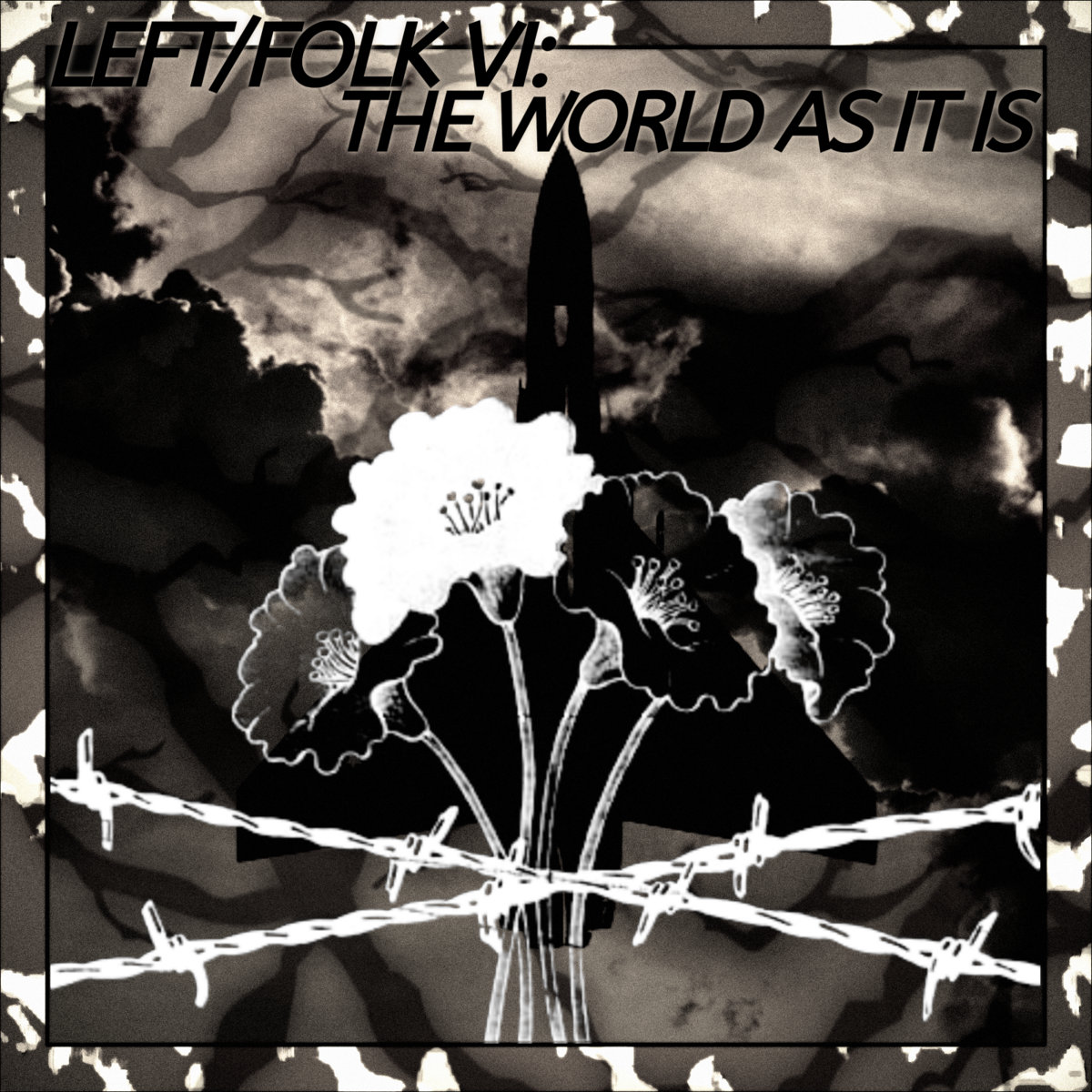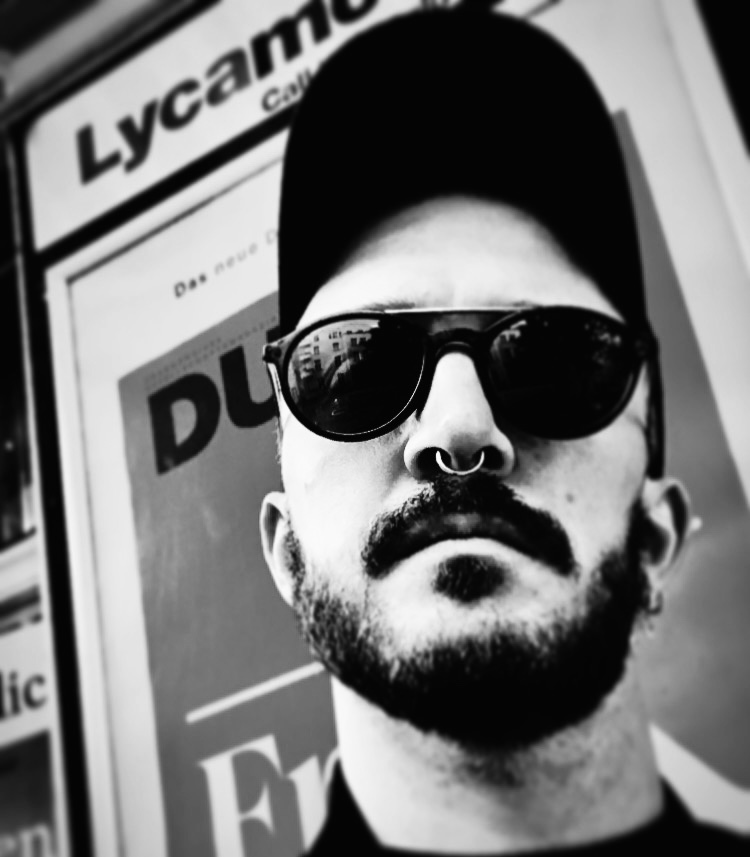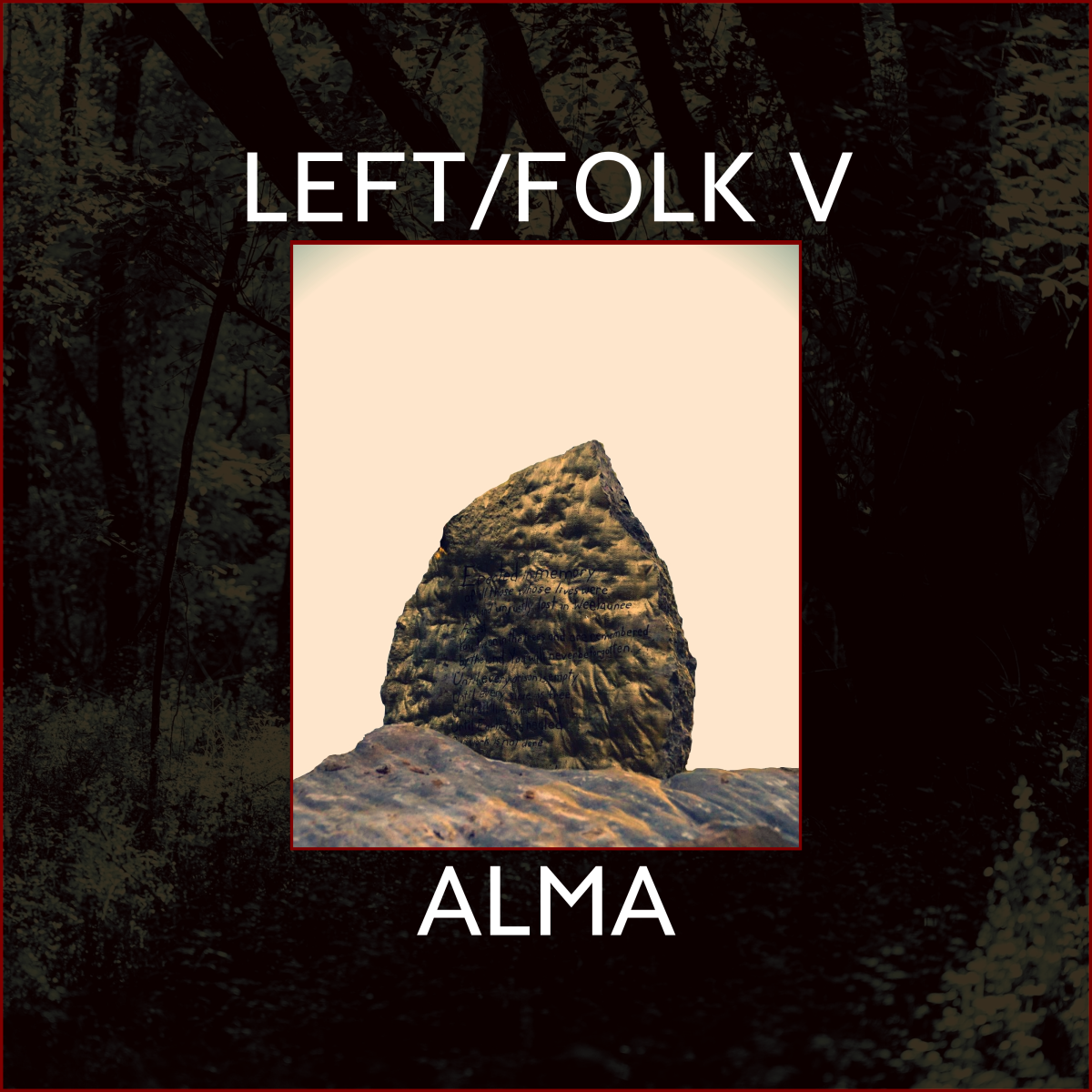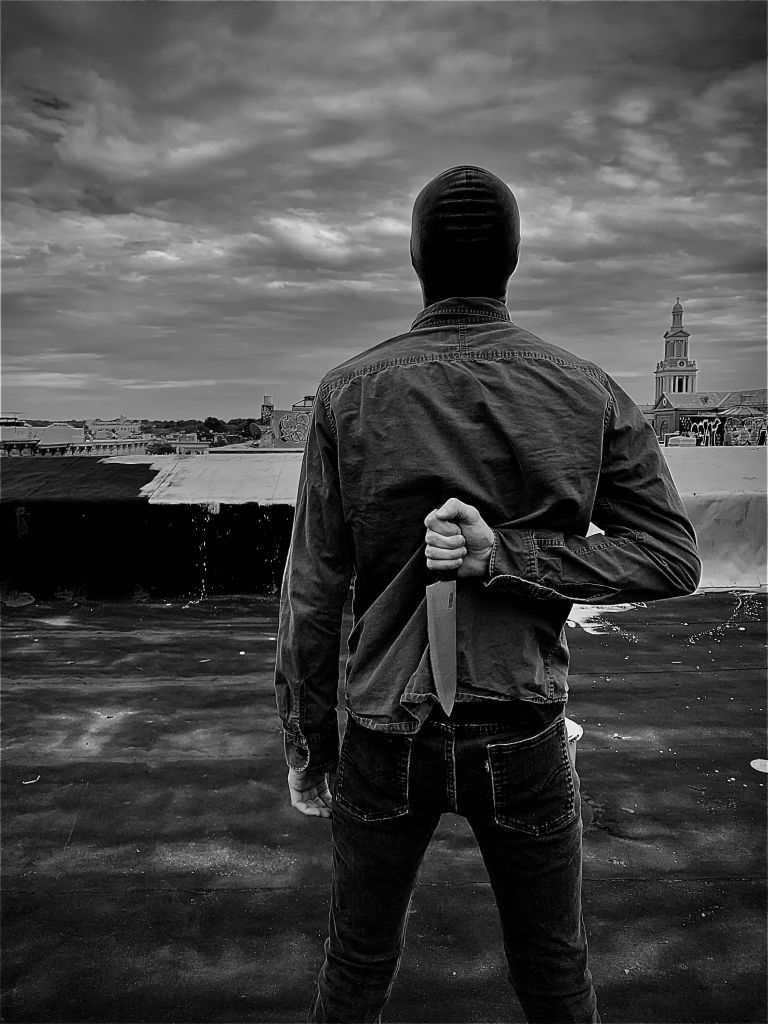One of the leading voices in building a radical neofolk scene has been the Left/Folk project, which we have partnered with in the past to release compilation albums of antifascist and antiracist neofolk and related genre artists. Left/Folk has now taken a huge step forward with their latest compilation, The World As It Is, now available on Bandcamp. The proceeds will go to an organization supporting Palestinians in Gaza currently facing a genocidal military onslaught and the largest forced migration since the Nakba.
We sat down with Left/Folk collective to discuss what this project is about, how these albums have come together, what their vision is for building a radical alternative, and what revolutionary neofolk even means.
ABA: Tell me about where the Left/Folk project came from and what was its operative idea?
LF: Left/Folk was born from a series of observations made by a small group of friends who have been actively in the neofolk scene for a long time (some for decades). Some grew tired of seeing discussions on social media devolve into people with roman statue profile pictures posting music videos from the same five big neofolk artists ad nauseam, it felt stale and above all, complacent to the way things have been for years. Others grew tired of sycophantry and the insular nature of never actually critiquing or questioning an artist for their views (even mildly) while treating the act of doing so as pure betrayal, it was becoming an echo-chamber. We also grew tired of being lumped in with every roman-saluting asshole that inevitably showed up to whatever neofolk show or club night we were at, which for some of us, happened more than a few times. Others grew bored with the discourse around neofolk being driven by people who were either too complacent to question it or by folks who weren’t even remotely interested in the music to provide any level of nuance. We were interested in disrupting what had become the status quo by adding a new dimension to the conversation.
We regard Left/Folk as a branch of neofolk music that is openly political and antifascist in character, be that in direct rhetoric or the personal values of any given artist within our scene. Our goal is to make our particular blend of sociopolitical, historical, and aesthetic interests synonymous with the term “Left/Folk” as its own divergent branch in the genre of neofolk, I think we can achieve this over time and with the cooperation of our listeners and collaborators. Left/Folk, in itself, is a microgenre. That being said, Left/Folk is also a broader big-tent project, meaning that we work with artists who range from a more generally progressive socioeconomic view of the world to a significantly much further radical leftist element to build a broader cohesive harmony within our microcosm of the neofolk scene at large. Reactionaries hate us, smarter folks are at the very least interested in us.
We also want to provide an alternate path for those who are either lovers of the genre or artists working within the genre who have a distaste for what seems to be a dominant ideology within the scene. A path for those who aren’t particularly impressed with goose-stepping uniforms or romantic notions of a greater western cultural hegemony or whining about all the wrong aspects of modernity. A path for people who can recognize that basing one’s cultural identity largely on the esoteric writings of a fascist incel loser doesn’t make you as much of a unique individual as you think it does. We wanted to provide space for an exploration of history, art, and spirituality without the trappings of catastrophizing existence amongst the ruins of the past or lamenting the loss of a heroic fictional history that never was. We are not afraid of ruins and we have no love for the world as it currently stands, nor do we seek to revive one which has been already dashed away. We provide echoes, that multiply and project into revolutionary new futures. We are music for, from, and beyond the apocalypse.
ABA: Why did you start doing these compilations, and what kind of music have they featured?
LF: We wanted to create an access point to music that diverges from the standard hegemonic messaging and cultural aesthetic that runs rampant within neofolk. Having seen the vitriol some artists have received for being openly political, specifically beyond a criticism of musical talent or creative value, we wanted to cultivate something that pushed back on that while practicing mutual aid and remaining undeniable as an artistic endeavor. We wanted to essentially display a show of force, and function as a clarion call for both artists and followers to shed the unnecessary lie of apolitical cowardice that is too common to the genre and take up the damn guitar. There does not need to be a compromise between artistic integrity and personal values, especially not when political reality permeates through all cultural expression. The sphere of the political does not also have to fall into the mundane, even if attached to material reality.
So, we took it upon ourselves to gather neofolk/post-industrial musicians who aligned with our vision and do whatever we could to elevate their work into a compilation that cannot be easily dismissed as yet another lazy trend. Our first compilation even featured known artists like Sieben, Nebelung, and Weather Veins who have been quite supportive and have become increasingly more open about their views over time. Sieben, in particular, was an early lightning rod for the type of ideas that we wanted to expand upon with our project and they were more than supportive with their contribution going as far as to record a fresh version of one of their more directly political songs for the compilation. Overall, the genre we focus on is neofolk but we naturally expand into its sibling genres like experimental and industrial, which in combination blend into the overall larger umbrella of post-industrial music. We wanted to do this while making a very direct and divisive (within the scene) political statement by pairing our first work with fundraising support for National Bail Fund Network in support of the BLM movement and uprisings. The result was a clear drawing of lines and intentions, which we were quite happy with. Since then, we regularly receive negative attention from right wing elements in the scene who supposedly didn’t exist because neofolk is “apolitical” or something like that. We absolutely welcome the tension and struggle that it brings, we find these things are elementary in the process of personal, political, and spiritual development. Our struggle is material. Our aim is spiritual.
ABA: Tell me about this new compilation. What’s its theme and what movement will it support?
LF: The latest Left/Folk compilation is in support of ANERA (the American Near East Refugee Aid) which actively provides urgent support for Palestinians under siege. ANERA has an excellent track record and is known to be a reputable organization. The organization was decided on by us in collaboration with our followers through enacting polls and getting opinions from the people who support us as well as collaborators. What is happening in Palestine is beyond “self defense,” it is wholesale slaughter, it is ethnic cleansing. We wholeheartedly believe in the emancipation of all people from the structures of systemic and direct violence by the State. With the increasing horrors being perpetrated on the long-suffering captive Palestinian population in an act of unjustifiable collective punishment by the Israeli government, we felt compelled to gather our allies in order to push something out as quickly as possible. For that purpose, we did not necessarily provide a theme for the artists to contribute, we simply stated what the fundraising would go towards and why we were doing it. From that, the music we received seemed to take upon its own character, with many artists taking it as an opportunity to express their reaction to the situation, and what we got was a reflection of ‘The World As It Is…’ hence the name and cohesion of the album. The latest is an eclectic collection of neofolk, martial, industrial, noise, experimental, neoclassical and more, yet it flows as naturally as a stream. It is not easy listening at times. “The World As It Is” is full of sorrow, destruction, death, ugliness, beauty and hope.
ABA: There are a number of newer artists to the world of antifascist neofolk and related genres, talk a bit about some of the new artists you have included, what they offer the compilation, and what trends you are seeing in our music scene? Do you think we are making headway in increasing the radical presence in these music scenes?
LF: We believe we have made great strides in proliferating the idea that there are many faces to the genre, that there are shadows and mirrors to behold. We have shown that there are radical elements there, and that they are not going away. We want to create an ongoing soundtrack to the falling of empire, and to the growth of a new world. The people are hungry for that, we are another avenue for it. We are proud to have a hand in the development and promotion of new bands that have risen to the occasion. One such band we have recently started to work with was Allegory & Emblem, who contributed a beautiful neofolk cover of Drink Before The War by Sinéad O’Connor. Along with falling into contact with several excellent industrial projects like NORILLAG, Girl Circles and Ritual Dust, all of whom contributed different flavors of experimentation and raw force alongside the intense noise track by Prolapsed Catholic. On this compilation we were also joined by projects that have actually been around for some time like the spirited French neofolk band Lisieux and Our Beauty In The Fire from Italy. I think overall, the trajectory of our compilations have highlighted a growth in the experimental aspects of Left/Folk, which is why (like many neofolk compilations before us) there are works that are wildly different from the standard guitar fare that reach into classical and noise elements that do not at all disrupt the overall atmosphere. I think it is a sign that more people are embracing the movement as not just a musical formula, but something more.
ABA: What standards do you set for artists that are included?
LF: In terms of vetting and politics, we look at several factors including sustained support for things we believe in, direct opposition to fascism, support for the Left/Folk project, and proximity to trusted organizations or collectives amongst other things. We also engage in direct conversation with artists we seek to bring into the fold, often being direct and arguably somewhat confrontational. We also plainly engage in political discourse to get a “vibe” from the artist, looking at their history and intentions and growth over time. We try to be as collaborative as possible in the overall process.We also understand the importance of art existing as itself, and thus we do not make demands for concessions to specific subject matter or sound, so at times we know a project may have a confrontational or difficult character to it, but it is often part of the process of finding greater understanding. Musically, it is difficult to really pinpoint what it is that strikes our ears as being what we seek out. There is a magickal confluence of emotion, timelessness and authenticity that must intersect to create a specific atmosphere. Usually it is something vague that catches us, but from our interactions with listeners there is an agreement that there’s a sort of dreamy nostalgic quality to the works we present. Not necessarily dwelling on the past, but recontextualizing it for the present. Some have described it as an echo. We seek out artists who quite importantly truly believe in what they are doing, there must be a flame in the gut, electricity running up the spine, a torrent in the soul of the sound, a sort of spirituality to the necessity of creating art.
ABA: What’s coming next for Left/Folk? What are some artists who are on your radar?
LF: We are on an endless path, ever moving forward towards potential oblivion, with the rest of the world. We will continue to shift our efforts towards different causes and focus our efforts where we can be useful as a collective cultural project, and always seek to inspire new works. Our aim is to continue organizing compilations with new and returning artists and possibly explore moving into more physical representations of our work. We definitely want to start creating music videos to songs we like, unofficial or not. Our greatest goal would be to organize some kind of music festival, live show, or to at least facilitate bands linking up to play together. We want to find ways to draw more people to our cause, as listeners and contributors. We continue to support artists like BloccoNero who have just released an excellent new album, Autumn Brigade who are creating some new and exciting things in the near future, Peace Through Decay who some of us work closely with and might collaborate with in the future, as well as helping to produce works with newer bands that want join our movement. We currently have our eyes on several projects, such as Allegory & Emblem who are building towards new material, Lisieux who have created beautiful albums in the past, Corpse D’Alsace who have surprised us with a wealth of incredible material within a span of a year, Without History who continues to push the boundaries of the genre in incredibly creative and exciting ways, and Weather Veins whose masterful musical prowess continues to enthrall our senses. Our movement is still quite new, but we are nowhere near ready to stop what we are doing. Whenever Left/Folk stops being, if it does, we believe that there are enough bands that have risen over the span of a few years to continue this movement on its own. We are here.












